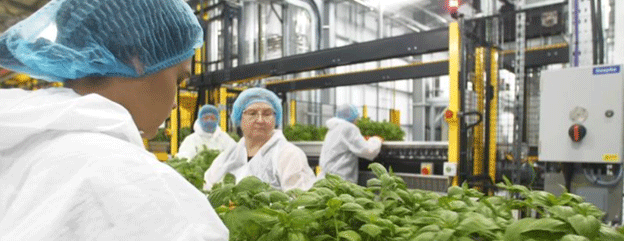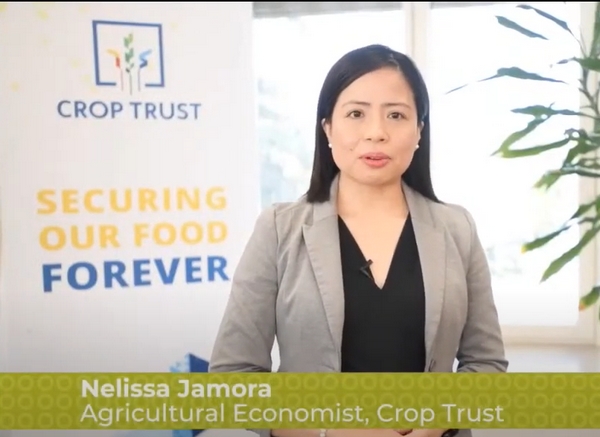In the heart of Norfolk, UK, a new frontier in agriculture is quietly being cultivated. At Fischer Farms, Europe’s largest vertical farm, plants grow not in the soil, but stacked on trays, one above the other, under a constant artificial light. This cutting-edge farm is pushing the boundaries of what’s possible in food production, offering a glimpse into the future of farming.
Fischer Farms, or “Farm 2” as it is known, is the brainchild of Tristan Fischer, a serial entrepreneur with a background in renewable energy. His ambition? To transform vertical farming into a scalable solution for growing a diverse range of crops, including high-demand and competitive products like strawberries, wheat, and rice. Fischer believes that only by expanding vertical farming’s capacity will it truly become a game-changer for global food production.
Vertical farming isn’t a new concept, but recent advancements in technology are bringing it closer to reality. First proposed over a century ago by American geologist Gilbert Ellis Bailey, the idea behind vertical farming is to grow crops hydroponically—without soil—in a controlled, artificial environment. The breakthrough comes in the form of LED technology. Early attempts at vertical farming struggled with inefficient, energy-intensive incandescent lights, but LEDs are now providing the necessary light at a fraction of the cost, making the system more energy-efficient and cost-competitive.
At Fischer Farms, basil plants grow under rows of these advanced LED lights, which are fine-tuned to emit specific wavelengths that encourage rapid growth. This high-tech setup, which spans over an enormous warehouse space, enables the farm to produce a dense yield in an otherwise unremarkable location. In this controlled environment, the farm is able to produce crops year-round—regardless of external weather conditions.
Fischer’s focus on reducing energy costs plays a crucial role in making vertical farming economically viable. The latest advancements in LED technology, combined with a downward cost curve for renewable energy, are making vertical farming increasingly competitive. For instance, Fischer’s first vertical farm, Farm 1, spent £2.5 million on lighting in 2018, but by the time Farm 2 was constructed, the cost of lighting had decreased by 50%, even though the farm’s size had grown sevenfold. Additionally, energy consumption has dropped by 60 to 70%, making vertical farming more sustainable both economically and environmentally.
But Fischer acknowledges that energy prices in the UK pose a challenge. With some of the highest energy costs in the developed world, the economic feasibility of vertical farming remains more difficult in regions like the UK. However, Fischer sees this as a stepping stone, with plans to scale operations to countries with lower energy costs once the business model is proven in the UK.
The carbon footprint of Fischer Farms is significantly lower than that of traditional agriculture. Instead of importing basil from the Mediterranean or North Africa, which requires long-distance transportation, the farm’s produce is sold to restaurant chains within the UK, dramatically reducing transportation emissions. This localized model is one of the key advantages of vertical farming, offering fresh, local produce with a reduced carbon impact.
The Potential of Vertical Farming: A Growing Market
As Fischer Farms shows, vertical farming isn’t just about growing lettuce or basil. The promise of this farming method lies in its ability to produce a wide variety of crops, grown in high-density environments that optimize land use. With the global population steadily increasing and agricultural land becoming scarcer, vertical farming presents a solution that could potentially meet the growing demand for food in urban areas.
Furthermore, the controlled environments offered by vertical farms allow for more precise farming practices. These systems can adjust factors like temperature, humidity, and light to optimize plant growth, leading to higher yields with fewer resources. With the potential to grow crops year-round, vertical farms also mitigate the impact of seasonal changes, offering a more reliable source of food.
However, the scalability of vertical farming depends on overcoming several challenges. High energy costs remain a barrier in certain regions, and the infrastructure needed to support large-scale vertical farms requires substantial investment. Additionally, the technology is still evolving, and it may take time for vertical farming to become truly cost-competitive with traditional farming methods.
Vertical farming is a promising innovation in the world of agriculture. Fischer Farms stands as a leading example of how this technology could revolutionize food production by making it more sustainable, energy-efficient, and localized. While challenges like high energy costs remain, the potential of vertical farming to address food security and environmental concerns is immense. As technology advances and energy costs continue to decrease, vertical farming may well become a significant player in the future of agriculture.












